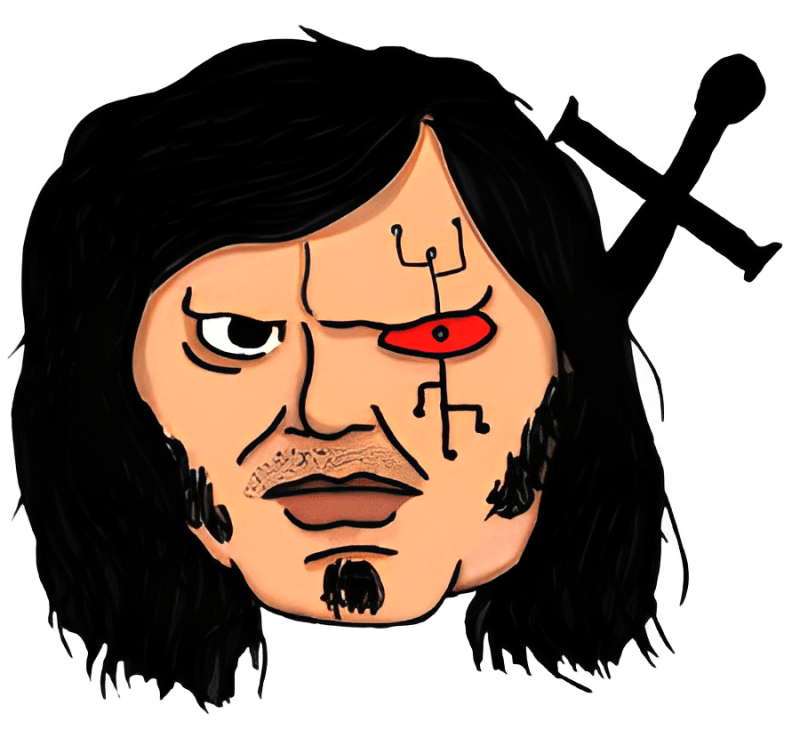In today’s society, narcissism seems to be on the rise. Everywhere we turn, we see individuals who are self-absorbed, lacking empathy, manipulative behavior, and constantly seeking admiration from others. But what happens when a narcissist is exposed for who they truly are? It’s like a parasite in panic, desperately trying to maintain its hold on its host.
The Immediate Reaction: Denial and Gaslighting
Upon being confronted or exposed, a narcissist’s instinctual response is to staunchly deny any accusations, regardless of the evidence presented against them. This denial is often coupled with gaslighting, a sophisticated form of psychological manipulation aimed at making victims question their own memory, perception, or sanity. By distorting facts and feigning ignorance, narcissists create an alternate reality in which their version of events becomes the only acceptable truth.
This behavior is not just about self-preservation; it’s a deliberate attempt to undermine the accuser’s credibility and assert dominance in the situation. The narcissist’s expertise in twisting narratives enables them to evade accountability and maintain their façade of superiority. Through gaslighting, they sow seeds of doubt, often convincing others that they are misremembering or overreacting to the situation.
This tactic not only protects the narcissist’s image but also isolates the victim, making it more challenging for them to seek help or validation from others. The narcissist’s ability to deny and gaslight with conviction makes confronting them a daunting task, often leaving the accuser feeling helpless and disoriented.
Shifting the Blame: A Narcissist’s Best Defense
In the intricate dance of maintaining their self-crafted image, narcissists adeptly employ the tactic of blame shifting to evade accountability. This maneuver involves attributing their own shortcomings and misdeeds to others, effectively redirecting attention and scrutiny away from themselves. By doing so, they not only protect their fragile ego but also reinforce their perceived innocence and superiority.
Narcissists possess a remarkable skill in identifying and exploiting the vulnerabilities of others to justify their blame-shifting. They artfully concoct reasons and fabricate narratives that paint themselves as mere victims of circumstance or the actions of others. This deflection is not a mere reaction but a strategic move to destabilize their accuser and regain the upper hand in any dispute.
Moreover, by projecting their faults onto someone else, narcissists manipulate the perceptions of bystanders. This ensures that any negative consequences are diverted away from them, preserving their façade of infallibility. The success of this tactic heavily relies on their charisma and ability to persuade others, traits that narcissists often use to their advantage.
Engaging in blame shifting also serves a deeper, more insidious purpose, it systematically undermines the confidence and sanity of their accusers. Those on the receiving end of this tactic may begin to doubt their perceptions and judgment, further entrenching the narcissist’s influence and control over them. Through this sophisticated form of psychological warfare, narcissists continue their manipulation unchallenged, leaving a trail of confusion and distress in their wake.
The Victim Card: Seeking Sympathy and Support
In the aftermath of being unmasked, narcissists deftly switch roles from perpetrator to victim. This dramatic role reversal is a calculated move designed to sway the court of public opinion in their favor. By orchestrating a narrative in which they are the injured party, they adeptly garner the sympathy and backing of those around them, turning the tables on their accuser. Their manipulation tactics are not just limited to verbal persuasion but extend to emotional manipulation, where they exploit the natural human instinct to comfort those in distress.
This strategy involves recounting tales of personal hardship or injustice, real or fabricated, to deflect from their wrongdoings. The narcissist, with a flair for drama, may embellish these stories to tug at the heartstrings of their audience, ensuring they are seen not as the villain but as a victim of unfortunate circumstances or the malice of others. Their adeptness at emotional manipulation can cause even the most discerning individuals to question the validity of the accusations against them.
Employing the victim card allows the narcissist to regain a semblance of innocence and moral high ground, making it more difficult for others to maintain a stance against them. This tactic not only serves to isolate the true victim but also rebuilds the narcissist’s support system, fortifying their defense against any future allegations. Through this intricate web of deceit and manipulation, narcissists continue to evade accountability, leaving a wake of confusion and conflict.
The Silent Treatment: A Form of Emotional Blackmail
When narcissists find themselves cornered or exposed, they might deploy the silent treatment as a strategic maneuver to exert dominance and manipulate emotions. This tactic involves a deliberate withholding of communication and engagement, serving as a form of punishment to those who dare challenge or unveil their true persona.
It’s a calculated effort to provoke feelings of guilt, anxiety, and loneliness in the victim, pressuring them to conform to the narcissist’s desires or apologize for perceived wrongs. Unlike other forms of overt manipulation, the silent treatment leverages the absence of action to inflict emotional distress. It’s a passive-aggressive tool in the narcissist’s arsenal, aimed at re-establishing control and asserting superiority without overt confrontation.
This psychological tactic not only isolates the victim but also instills a sense of helplessness, as attempts to resolve the situation are met with cold indifference. Through this silence, the narcissist communicates a clear message, compliance and subjugation are the only paths to re-establishing the connection, leaving their targets ensnared in a cycle of confusion and self-doubt.
Hoovering: An Attempt to Regain Control
In the complex psychological landscape navigated by narcissists, hoovering emerges as a critical technique for reasserting their dominance over those who attempt to break free from their influence. This method involves a sudden and often unexpected resurgence of affection, attention, and promises of transformation from the narcissist towards their previous victims. By deploying charm and seemingly sincere pledges of improvement, narcissists aim to entice their targets back into a cycle that many have struggled to escape. This behavior is not rooted in genuine remorse or a commitment to change but is a calculated move to re-establish the connection necessary for the narcissist to continue their manipulative behaviors.
The process of hoovering can be incredibly confusing and disarming for the recipient. It plays on the emotional vulnerabilities and unresolved feelings that may linger, even after recognizing the harmful nature of the relationship. The sudden shift from cold indifference or hostility to warmth and affection is designed to destabilize the victim’s resolve, making them question their decision to distance themselves. By creating an illusion of personal growth and understanding, the narcissist seeks to weave their way back into the lives of those they’ve wronged, reinforcing their presence and control. This tactic underscores the relentless pursuit of narcissists to maintain influence and avoid the repercussions of their actions, showcasing their adeptness at emotional manipulation.



Smear Campaigns: The Art of Reputation Management
Amidst exposure, narcissists swiftly pivot to orchestrating smear campaigns as a defense mechanism, meticulously crafting narratives to undermine those who dare challenge them. This strategic dissemination of falsehoods, exaggerated tales, and skewed perceptions is aimed squarely at discrediting the accuser, effectively diverting attention from the narcissist’s misconduct.
By polluting the information landscape with their distorted version of events, they attempt to sow confusion and doubt among peers, colleagues, and any mutual acquaintances. This manipulation extends beyond mere protection of their fragile self-image; it’s a calculated assault on the credibility of their challenger, designed to isolate them and erode their support network. The prowess of a narcissist in manipulating public opinion through such campaigns demonstrates their acute understanding of social dynamics and the power of narrative control.
Engaging in this form of character assassination allows the narcissist to maintain the upper hand, ensuring that their reputation remains untarnished while casting a shadow of doubt over their accuser. Through this tactical manipulation of social perceptions, narcissists exhibit a chilling proficiency in bending the collective viewpoint to their favor, further entrenching their ability to evade true accountability.
Self-Victimization: The Final Resort
Narcissists adept at evading responsibility may employ self-victimization as a strategic fallback. This maneuver is intricately designed to sway perception, crafting a narrative where they, despite being the perpetrators, emerge as the aggrieved parties. Through this artifice, they ingeniously invoke pity and compassion, shifting the focus from their misdeeds to their own contrived distress. This tactic cleverly distorts the reality of the situation, compelling others to reassess their stance and potentially forgive the narcissist’s transgressions.
It’s a testament to their manipulation prowess, as they skillfully manipulate emotional responses to secure leniency and support. By painting themselves as beleaguered victims, narcissists not only divert attention from their actions but also dampen the resolve of those holding them accountable, ensuring their continued influence and control. This calculated display of vulnerability is but another tool in their arsenal, aiming to maintain their façade and manipulate societal perceptions to their advantage.






